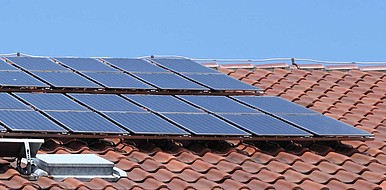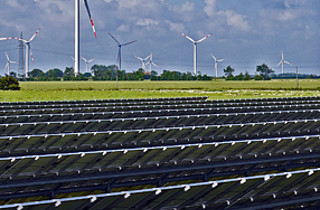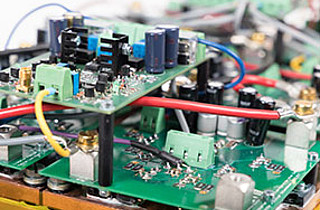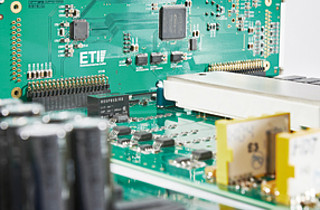Efficient photovoltaic facilities
Photovoltaic facilities contribute essentially to electricity production from renewable energy sources. The core of any photovoltaic facility is the solar generator. It consists of plate-shaped solar modules that convert solar energy into direct current. Several modules connected in series represent a string. In larger facilities, several strings are frequently connected in parallel.
State of the art
To feed the direct current produced by the solar generator into the grid, inverters are required. They also maximize the output of the solar modules that depends on the intensity of solar irradiation among others. A shadow cast by e.g. a stack onto parts of the solar facility may cause the individual strings to supply different voltages at maximum power. For an optimum energy yield, it is therefore reasonable to separately tap the powers delivered by the strings and to control them individually. So far, DC converters have been used for this purpose. With their help, the voltages of the different strings can be adjusted freely. Such DC converters, however, cause additional costs and energy losses.
Technology
Scientists of the KIT Institute of Electrical Engineering (ETI) have now succeeded in optimizing the circuit configurations for the control of photovoltaic facilities. In case of a typical design of the facilities, the voltages of the strings differ to a limited extent even in case of a partial shadow. In practice, it is therefore sufficient to use DC converters with a reduced operation range. Such devices are cheaper and have a higher efficiency compared to the converters used so far. This enhances the efficiency of the PV facilities.
Advantages
The circuit configurations developed can either be combined with conventional inverter circuits or used for direct feeding into the grid. Moreover, they are also suited for connection of energy storage systems.
Options for companies
The KIT looks for partners interested in the further development and commercial use of this technology
Your contact person for this offer
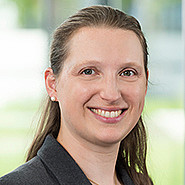
Innovation Manager Energy Karlsruhe Institute of Technology (KIT)
Innovation and Relations Management (IRM) Phone: +49 721 608-25335
Email: pelisson-schecker@kit.edu

